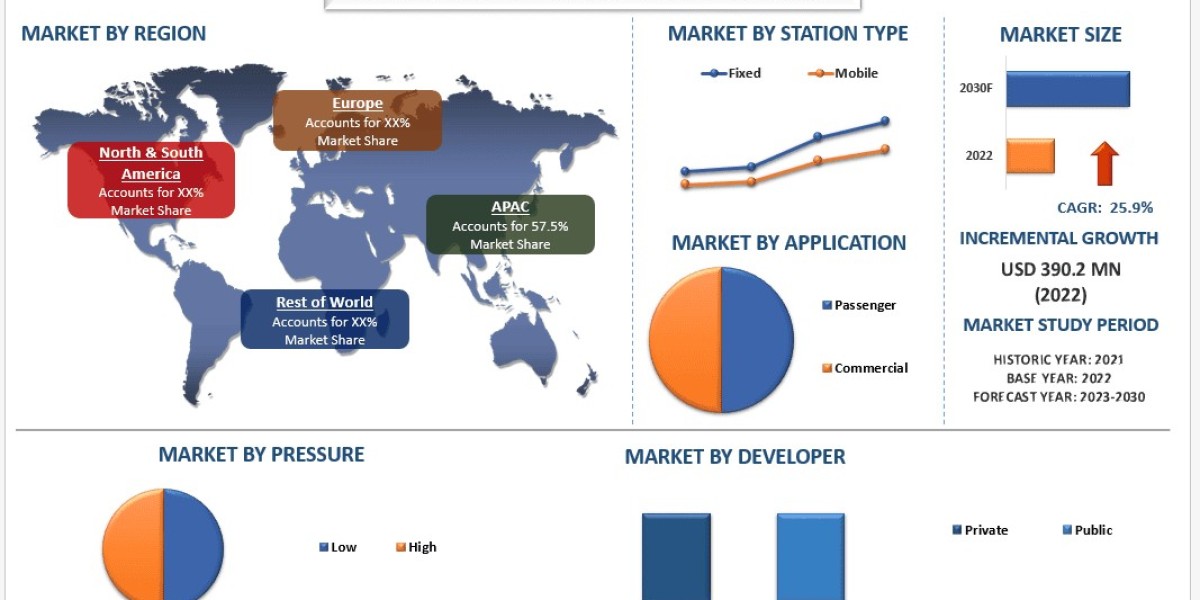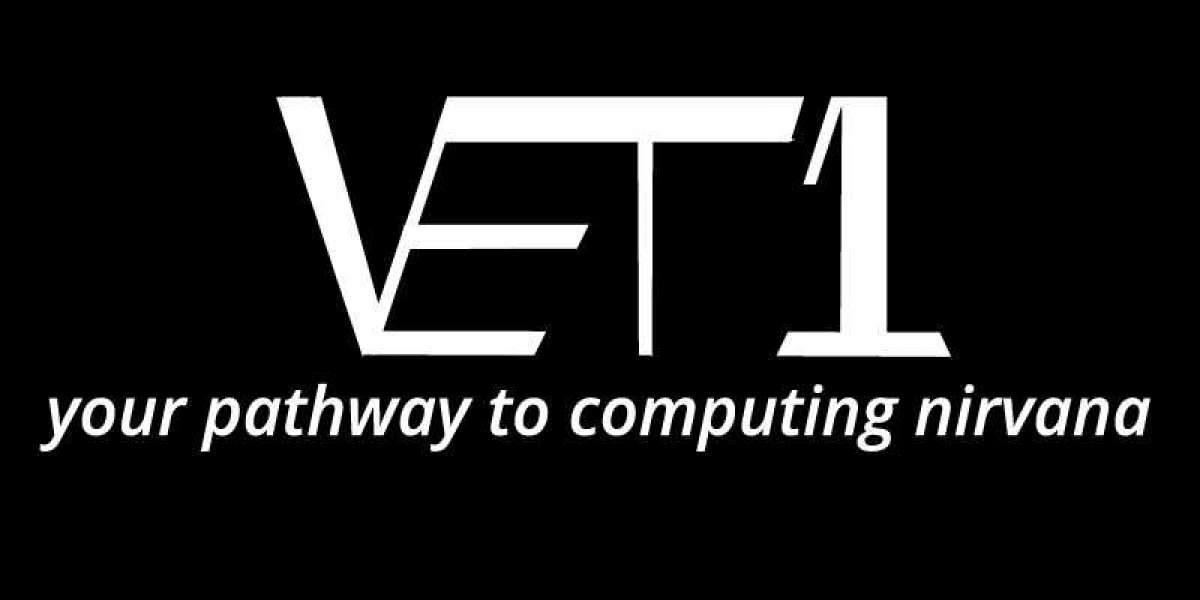According to a new report published by UnivDatos, the Hydrogen Fuelling Station market was valued at USD 390.2 million in 2022 & is expected to grow at a CAGR of 25.9% from 2023-2030. The analysis has been segmented into Station Type (Fixed, and Mobile); Pressure (Low, and High); Applications (Passenger, and Commercial); Developer (Private, and Public); Region/Country.
The Hydrogen Fuelling Station market report has been aggregated by collecting informative data on various dynamics such as market drivers, restraints, and opportunities. This innovative report makes use of several analyses to get a closer outlook on the Hydrogen Fuelling Station market. The Hydrogen Fuelling Station market report offers a detailed analysis of the latest industry developments and trending factors in the market that are influencing the market growth. Furthermore, this statistical market research repository examines and estimates the Hydrogen Fuelling Station market at the global and regional levels.
For More Detailed Analysis in PDF Format, Visit- https://univdatos.com/reports/hydrogen-fuelling-station-market?popup=report-enquiry
Key Market Dynamics
The hydrogen fuelling station market has witnessed significant growth in recent years due to a rise in investment by countries toward the hydrogen sector. Countries such as China, South Korea, Japan, Germany, and the USA are leading the market in terms of hydrogen fuelling stations market for the year 2022. Hydrogen has become a potential alternative source of fuel which is being used to achieve carbon-free emission targets. The market for hydrogen fueling stations is expected to showcase exponential growth in the coming years on account of government initiatives and climate goals. The increasing adoption of fuel-cell vehicles is a major catalyst driving the growth of the hydrogen fuelling station market globally.
Despite the benefits the total number of Hydrogen Fuelling Stations worldwide at the end of 2022 was just 814. The biggest factor restraining the market of hydrogen fuel stations is the lack of fuel cell vehicles in the world. Fuel cell vehicles offer longer driving ranges and faster refueling times when compared to battery electric vehicles, however, despite these benefits, the sales of fuel cell vehicles are negligible when compared to electric and gasoline vehicles. For instance – during the first quarter of 2023, the sale of hydrogen vehicles in the USA was just 725 vehicles which is 30% lower when compared to the previous year.
The key pillars of decarbonizing the global energy system are energy efficiency, behavioral change, electrification, renewables, hydrogen and hydrogen‐based fuels, and CCUS. The importance of hydrogen in the Net zero Emissions Scenario is reflected in its increasing share in cumulative emission reductions. Strong hydrogen demand growth and the adoption of cleaner technologies for its production thus enable hydrogen and hydrogen-based fuels to play a significant contribution in the Net Zero Emissions Scenario to decarbonize sectors where emissions are hard to abate, such as heavy industry and long-distance transport.
Since Hydrogen Fuelling Stations were still in the development phase and not deployed extensively in the market, covid-19 didn’t affect them severely as other industries. It slowed their development speed and pushed deadlines of completion for several Hydrogen Fuelling Stations, but the impact didn’t affect the industry severely. Research and development funds for these Hydrogen Fuelling Stations were affected but due to the rising demand for renewable energy, the demand for them remained unchanged. We saw the deadline for these products being pushed back during the pandemic, but it was one of the few industries least impacted by covid. Since the pandemic passed and the market for renewable products is booming at an exponential rate, the market for Hydrogen Fuelling Stations is also expected to register high growth once the product is deployed at a wider scale.
The global Hydrogen Fuelling Station market report is studied thoroughly with several aspects that would help stakeholders in making their decisions more curated.
· Based on Station type, the Hydrogen Fuelling Station market is divided into fixed and mobile station segments. The fixed station segment acquired a majority share in the Hydrogen Fuelling Station market and is expected to showcase a substantial growth rate during the forecast period. Since the availability. Although the mobile station type is only popular in some countries such as Japan, many companies have started investing in mobile stations in order to lessen the gap between fuel cell cars and fuelling stations. For instance – In July 2023, Hexagon Purus (Oslo, Norway) received an order from a large European OEM to deliver a mobile 700-bar hydrogen (H2) refueling station with a contract value of 3 Million Euro.
· Based on Pressure, the Hydrogen Fuelling Station market is divided into low and high-pressure segments. The High-pressure segment acquired a majority share in the Hydrogen Fuelling Station market and is expected to showcase a substantial growth rate during the forecast period. The high-pressure segment supplies hydrogen at 700 bar and is used for light-duty vehicles. The sale of light-duty vehicles is around 80% whereas the sale of heavy-duty vehicles is around 20%. High sales of passenger low-duty vehicles are acting as a catalyst for the growth of the high-pressure segmentation in the global hydrogen fuelling station during the forecast period.
· Based on Application, the Hydrogen Fuelling Station market is divided into passenger and Commercial segments. The Passenger segment acquired a majority share in the Hydrogen Fuelling Station market and is expected to showcase a substantial growth rate during the forecast period. Around 80% of the hydrogen cars sold worldwide are passenger cars. Around 26,000 hydrogen passenger cars were sold in Asia Pacific region constituting around 60% of the hydrogen passenger vehicles sold globally, followed by North America and then Europe in third place with just 3556 passenger cars by the end of 2021.
· Based on Developer, the Hydrogen Fuelling Station market is divided into Private and Public segments. The public segment acquired a majority share in the Hydrogen Fuelling Station market and is expected to showcase a substantial growth rate during the forecast period. As the sale of fuel cell vehicles is very less compared to battery electric vehicles and traditional gasoline vehicles, it is not profitable for private players to open a hydrogen fuelling station. Most of these stations are funded by the government aiming to promote low-emission fuel and to provide infrastructure for the limited number of fuel cell vehicles in their region. Countries such as south Korea and Japan has invested heavily to build hydrogen fuel station infrastructure in their countries in order to promote hydrogen vehicles.
Explore the Comprehensive Research Overview - https://univdatos.com/reports/hydrogen-fuelling-station-market
Related Reports:
Low Carbon Battery Market: Current Analysis and Forecast (2022-2028)
Hydrogen Fuel Cell Electric Vehicle Market: Current Analysis and Forecast (2023-2030)
Hydrogen Electrolyzer Market: Current Analysis and Forecast (2023-2030)
Hydrogen Compressor Market Current Analysis and Forecast (2021-2027)
Hydrogen Storage System Market: Current Analysis and Forecast (2023-2030)
Competitive Landscape
The degree of competition among prominent global companies has been elaborated by analyzing several leading key players operating worldwide. The specialist team of research analysts sheds light on various traits such as global market competition, market share, most recent industry advancements, innovative product launches, partnerships, mergers, or acquisitions by leading companies in the Hydrogen Fuelling Station market. The major players have been analyzed by using research methodologies such as Porter’s Five Forces Analysis for getting insight views on global competition.
Recent Developments:
· July 2023: Air Liquide announces close to 200 million US dollars in investment in two advanced material production centers in Taiwan and South Korea, to accelerate the development and manufacturing of new advanced materials while increasing reliability and improving the sustainability of its supply chain by localizing the production close to our semiconductor customers.
Contact Us:
UnivDatos
Contact Number - +19787330253
Email - contact@univdatos.com
Website - www.univdatos.com







